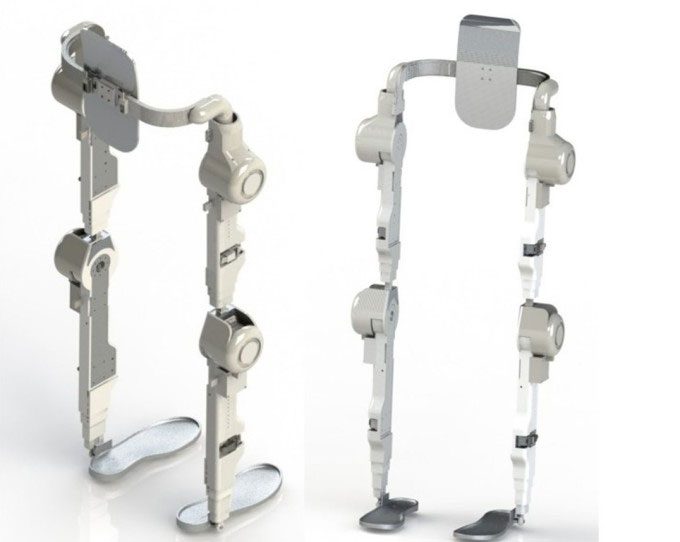The robotic exoskeleton developed by the research team at SHTP Labs operates similarly to human legs and is designed for physical therapy for individuals recovering from strokes or leg injuries.
This product is the result of a collaboration between five scientists from the Precision Mechanics and Automation Laboratory at the Research and Development Center, High-Tech Park of Ho Chi Minh City (SHTP Labs) and several universities over the past three years. According to Master Bui Quang Vinh, Head of the Precision Mechanics and Automation Laboratory at SHTP Labs, the robotic exoskeleton is designed to assist individuals in standing up, sitting down, and maintaining balance while moving on the ground. This product is suitable for those with leg injuries or stroke survivors undergoing rehabilitation. With its supportive capabilities, the exoskeleton can also help users carry heavy loads and assist military personnel during long marches.
The team’s idea came from observing that existing products on the market mainly focus on training individual joints in the legs and do not provide a comprehensive solution for both legs. Additionally, during training, users must remain stationary, which can lead to boredom and reduced effectiveness. The robotic exoskeleton allows patients to experience walking on their own legs, helping to activate the muscles in their legs and improve recovery outcomes.
Testing leg rehabilitation with the robotic exoskeleton by the research team. (Video: Research Team).
The robotic exoskeleton is primarily made from aluminum, weighs approximately 20 kg, and has adjustable height capabilities to accommodate users of various ages and physical conditions. The joints of the exoskeleton are equipped with four electric motors, each with a power of 400W, along with a gearbox that allows for speed adjustment, suitable for different training intensities.
Master Vinh notes that the motors play a crucial role in ensuring the exoskeleton is compact and not cumbersome during training, while also being aesthetically pleasing yet powerful enough to support the user’s weight. “Unlike upper limb rehabilitation devices, the robotic exoskeleton for legs must ensure proper weight distribution to prevent falls during use,” he stated. To maintain balance, the team conducted analyses to ensure stability and developed a support system that enables users to stand up, sit down, and maintain balance while training their legs.
The power supply for the system consists of two 20Ah lithium batteries, one powering the robotic exoskeleton and the other for the support platform and control circuit. Both systems can operate simultaneously via a connecting cable or independently depending on the usage requirements. The product features an emergency stop button that halts all system operations in case of faults that may pose risks to users during training.
The team is developing software to manage training sessions using simulation tools. Through the training process, data regarding the angle changes of the leg joints, step lengths, and more are collected to assist doctors in creating exercise regimens tailored to the patient’s needs.
In the near future, the research team will collaborate with a rehabilitation hospital to test the system on several patients to evaluate its effectiveness, laying the groundwork for product optimization and commercialization. The team also plans to design sensors to be attached to the feet to measure training force and apply artificial intelligence to analyze patient training data for creating more optimal exercise routines. “This research direction is interdisciplinary, requiring the involvement of many experts, especially from health agencies, to refine and bring the product to life,” Master Vinh added.

Design of the robotic exoskeleton for rehabilitation by the team. (Photo: Research Team).
Associate Professor Dr. Le Hoai Quoc, President of the Ho Chi Minh City Automation Association, noted that current research on robotic exoskeletons for legs in Vietnam is primarily limited to scientific studies, with few commercially applicable products available. He assessed that rehabilitation exoskeletons for arms and legs possess distinct and complex differences. However, a training system for legs must support the patient’s body weight from sitting, standing, and walking positions. This depends on the physical condition and recovery status of each patient, necessitating precise calculations.
He mentioned that the team’s research is currently in its early stages. To commercialize the product, testing on numerous patients is required to assess their experiences and optimize both the design and costs to perfect the product in terms of technology and affordability. “We will assist the team in connecting with rehabilitation specialists and hospitals for trials. For the product to be applicable, scientists provide the training equipment, while doctors are responsible for prescribing the training regimen and conditions for each patient,” Associate Professor Quoc stated.


















































